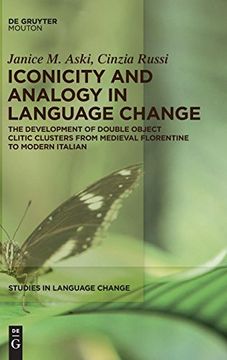Share
Iconicity and Analogy in Language Change: The Development of Double Object Clitic Clusters From Medieval Florentine to Modern Italian (Studies in Language Change) (in English)
Cinzia Russi
(Author)
·
Janice Aski
(Author)
·
Walter de Gruyter
· Hardcover
Iconicity and Analogy in Language Change: The Development of Double Object Clitic Clusters From Medieval Florentine to Modern Italian (Studies in Language Change) (in English) - Aski, Janice ; Russi, Cinzia
Choose the list to add your product or create one New List
✓ Product added successfully to the Wishlist.
Go to My WishlistsIt will be shipped from our warehouse between
Tuesday, June 11 and
Wednesday, June 12.
You will receive it anywhere in United States between 1 and 3 business days after shipment.
Synopsis "Iconicity and Analogy in Language Change: The Development of Double Object Clitic Clusters From Medieval Florentine to Modern Italian (Studies in Language Change) (in English)"
This book examines the alternation between accusative-dative and dative-accusative order in Old Florentine clitic clusters and its decline in favor of the latter. Based on an exhaustive analysis of data collected from medieval Florentine and Tuscan texts we offer a novel analysis of the rise of the variable order, the transition from one order to the other, and the demise of the alternation that relies primarily on iconicity and analogy. The book employs exophoric pragmatic iconicity, a language-external iconic relationship based on similarity between linguistic structure and the speaker/writer's conceptualization of reality, and endophoric iconicity, a language-internal iconic relationship where the iconic ground is construed between linguistic signs and structures. Analogy is viewed as a productive process that generalizes patterns or extends grammatical rules to formally similar structures, and obtains the form of the analogical relationship between the masculine singular definite article and the third person singular accusative clitic, which shared the same phonotactically constrained distribution patterns. The data indicate that exophoric pragamatic iconicity exploits and maintains the alternation, whereas endophoric iconicity and analogy conspire to end it.
- 0% (0)
- 0% (0)
- 0% (0)
- 0% (0)
- 0% (0)
All books in our catalog are Original.
The book is written in English.
The binding of this edition is Hardcover.
✓ Producto agregado correctamente al carro, Ir a Pagar.

